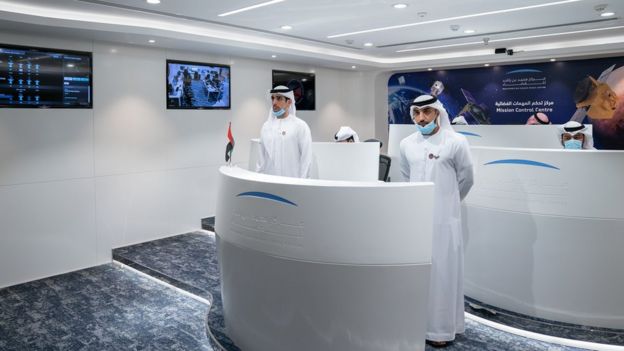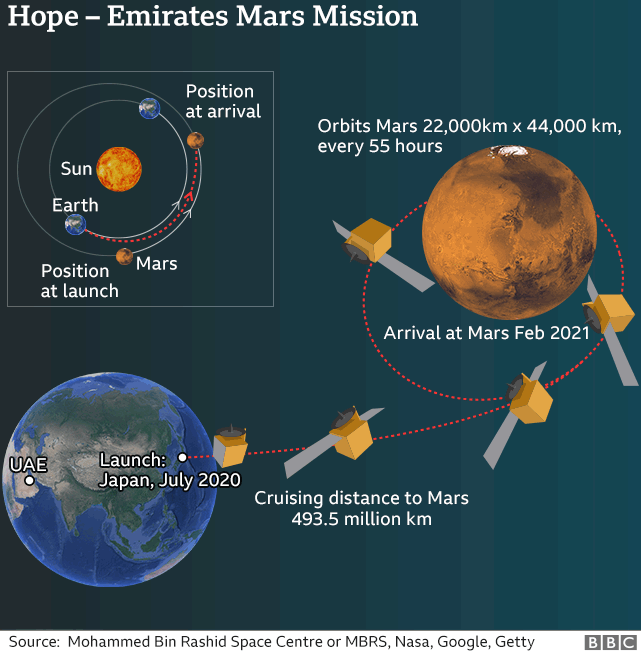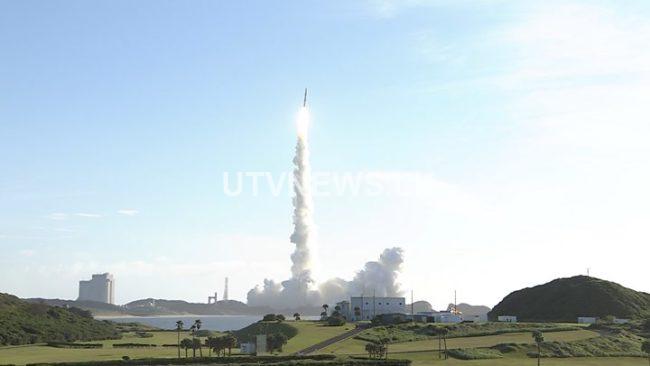UTV | COLOMBO – The United Arab Emirates’ historic first mission to Mars is under way, after a successful lift-off in Japan.
The Hope probe launched on an H2-A rocket from Tanegashima spaceport, and is now on a 500-million-km journey to study the planet’s weather and climate.
Two previous attempts to launch the probe in the past week had to be called off because of adverse weather.
Hope’s arrival in February 2021 is set to coincide with the 50th anniversary of the UAE’s formation.

Her Excellency Sarah Al Amiri, the science lead on Hope, spoke of her excitement and relief in seeing the rocket climb successfully into the sky. And she stated the impact on her country would be the same as that on America when its people watched the Apollo 11 Moon landing 51 years ago, also on 20 July.
“It was an anchor for an entire generation that stimulated everyone that watched it to push further and to dream bigger,” she told BBC News.
“Today I am really glad that the children in the Emirates will wake up on the morning of the 20th of July having an anchor project of their own, having a new reality, having new possibilities, allowing them to further contribute and to create a larger impact on the world.”
The UAE craft is one of three missions heading to Mars this month.
The US and China both have surface rovers in the late stages of preparation. The American mission, Perseverance, sent its congratulations to Hope. “I cannot wait to join you on the journey!” its Twitter account said.
Why is the UAE going to Mars?
The UAE has limited experience of designing and manufacturing spacecraft – and yet here it is attempting something only the US, Russia, Europe and India have succeeded in doing. But it speaks to the Emiratis’ ambition that they should dare to take on this challenge.
Their engineers, mentored by American experts, have produced a sophisticated probe in just six years – and when this satellite gets to Mars, it’s expected to deliver novel science, revealing fresh insights on the workings of the planet’s atmosphere.

In particular, scientists think it can add to our understanding of how Mars lost much of its air and with it a great deal of its water.
The Hope probe is regarded very much as a vehicle for inspiration – something that will attract more young people in the Emirates and across the Arab region to take up the sciences in school and in higher education.
The satellite is one of a number of projects the UAE government says signals its intention to move the country away from a dependence on oil and gas and towards a future based on a knowledge economy.
But as ever when it comes to Mars, the risks are high. A half of all missions sent to the Red Planet have ended in failure. Hope project director, Omran Sharaf, recognises the dangers but insists his country is right to try.
“This is a research and development mission and, yes, failure is an option,” he told BBC News.
“However, failure to progress as a nation is not an option. And what matters the most here is the capacity and the capability that the UAE gained out of this mission, and the knowledge it brought into the country.”
How has the UAE managed to do this?
The UAE government told the project team it couldn’t purchase the spacecraft from a big, foreign corporation; it had to build the satellite itself.
This meant going into partnership with American universities that had the necessary experience. Emirati and US engineers and scientists worked alongside each other to design and build the spacecraft systems and the three onboard instruments that will study the planet.
While much of the satellite’s fabrication occurred at the Laboratory for Atmospheric and Space Physics (LASP) at the University of Colorado, Boulder, considerable work was also undertaken at the Mohammed Bin Rashid Space Centre (MBRSC) in Dubai.
LASP’s Brett Landin believes the Emiratis are now in a great place to do another mission on their own.
“I could give you the process for fuelling a spacecraft, but until you’ve put on an escape suit and transferred 800kg of highly volatile rocket fuel from storage tanks into the spacecraft, you don’t really know what it’s like,” the senior systems engineer said.
“Their propulsion engineers have now done it and they know how to do it the next time they build a spacecraft.”
BBC
